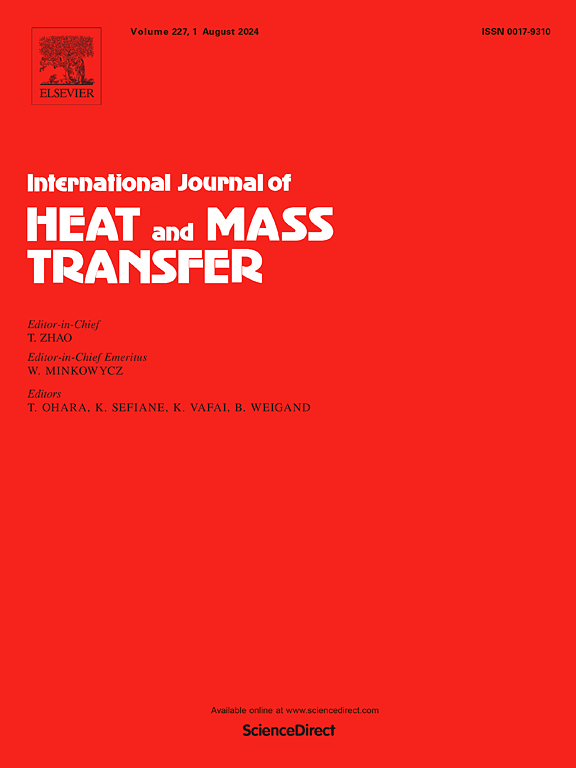Design, optimization, and validation of a triply periodic minimal surface based heat exchanger for extreme temperature applications
IF 5
2区 工程技术
Q1 ENGINEERING, MECHANICAL
International Journal of Heat and Mass Transfer
Pub Date : 2025-02-17
DOI:10.1016/j.ijheatmasstransfer.2025.126797
引用次数: 0
Abstract
Heat exchanger (HX) innovation offers potential for significant improvements in energy efficiency for a host of applications including but not limited to aviation and power generation cycles. Triply Periodic Minimal Surfaces (TPMS) have received significant attention in recent years due to their incredibly high surface area density, which makes them very attractive from a heat transfer point of view. Recent efforts have largely focused on thermal-hydraulic characterization of the many available TPMS and the testing of small-scale HX prototypes. However, practical implementation remains largely unexplored, partially due to the extreme computational cost associated with accurately simulating these complex structures. In this work, we present the design, simulation, and optimization of a TPMS-HX for high temperature (900 °C) and pressure (25 MPa) applications. Detailed analysis of HX sub-sections is conducted to define the smallest repeatable section which may be used to characterize the thermal-hydraulic performance of the entire HX, enabling rapid design and iteration with significantly reduced computational cost. Compared to preliminary results for a water-to-water experiment, calibrated heat transfer and pressure drop predictions were within ±5 % and ±10 %, respectively. Optimization results show a 10x increase in volumetric power density over the initial design, which is verified against a parametric exhaustive search of the HX design space. It was found that reducing the unit cell hydraulic diameter cell plays the largest role in increasing heat transfer, increasing the surface area density and enabling a more compact and efficient HX.
求助全文
约1分钟内获得全文
求助全文
来源期刊
CiteScore
10.30
自引率
13.50%
发文量
1319
审稿时长
41 days
期刊介绍:
International Journal of Heat and Mass Transfer is the vehicle for the exchange of basic ideas in heat and mass transfer between research workers and engineers throughout the world. It focuses on both analytical and experimental research, with an emphasis on contributions which increase the basic understanding of transfer processes and their application to engineering problems.
Topics include:
-New methods of measuring and/or correlating transport-property data
-Energy engineering
-Environmental applications of heat and/or mass transfer

 求助内容:
求助内容: 应助结果提醒方式:
应助结果提醒方式:


